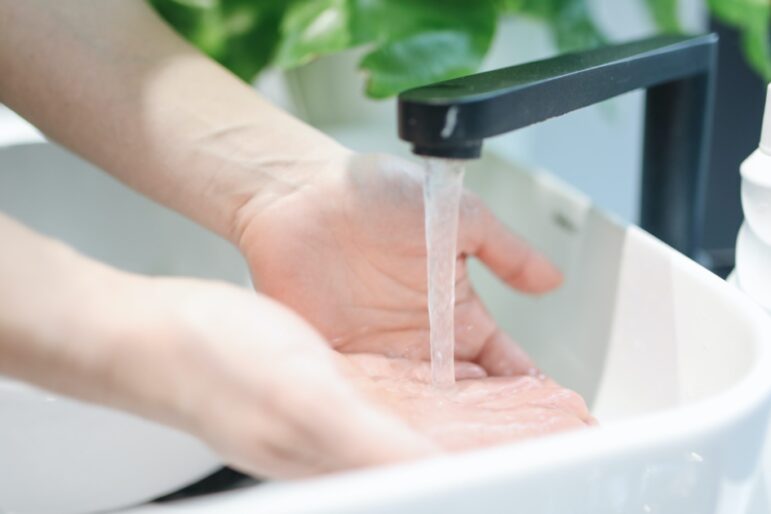Throughout the COVID-19 pandemic, many businesses made changes in their commercial hygiene routines in response to public health guidelines. As a result, many businesses – especially in customer-facing industries like retail and hospitality – continue to invest in their environment to make their shared spaces safer and more hygienic.
Creating a cleaner air environment indoors
Today, Canadians have a greater awareness and understanding of the importance of indoor air quality. With Canadians spending up to 90 per cent of their time indoors according to Environment and Climate Change Canada [1], it’s increasingly important to address microscopic particles like dust, volatile organic compounds, formaldehyde, and microbes like bacteria and viruses, that pollute the air we breathe.
While most commercial spaces have central ventilation systems, it may be unclear to both customers and owners how effective filtration and ventilation are, especially when they’re unseen. Coupled with increased awareness of indoor pollutants, visible purification technology can help people feel safe and confident in indoor environments. In a recently conducted air quality survey, 82 per cent of Canadians said they believe air purification is important in indoor working environments, citing reasons including reducing airborne microbes to limit contracting or transmitting illness, improving long-term health by reducing harmful airborne particles, and for an overall fresher feeling environment. [2]
Using tools like portable air purifiers provide an easy way to improve air quality in any commercial space. However, choosing the right machine for your business can be a challenge. Consider these key features when investing in an air purifier:
- The size of your space and the volume of air you need to filter. Air Multiplier technology also projects the purified air to the full room, expanding the purification benefits to larger spaces.
- Current air quality issues in your space. Old buildings may be dusty, commercial products may off-gas volatile organic compounds and formaldehyde, allergens are a year-round problem, and viruses can spread through the air. Dyson purifiers are scientifically tested to capture particles as small as 0.3 microns, including dust, allergens, and viruses like H1N1 influenza.[3] Many purifiers are also equipped with a catalytic filter that traps and destroys formaldehyde continuously, breaking it down into carbon dioxide and water.
- Consumers increasingly demand standards like HEPA. These advanced filter systems capture 99 per cent of particles including allergens, pollutants, bacteria, pollen, mould spores, and gases.
Improving the washroom experience
While air quality might be effectively invisible, hygiene in shared washrooms is anything but. A 2021 global survey found that empty paper towel dispensers were among the top five frustrations for Canadians surveyed about using public washrooms, followed by a lack of toilet paper, unclean toilets, no soap, and blocked toilets.[4]
But while customers find a lack of paper towels frustrating, 24 per cent of Canadians surveyed were unsure about the cleanliness of air from hand dryers.[5] Choosing the best option for a shared public washroom can be a challenge, but armed with the right information, businesses can make informed decisions that improve the washroom experience for all customers.
Some of the key factors to consider include:
- Your budget. While hand dryers can be more expensive upfront, their long-term benefits can far outweigh these costs, some costing up to 99 per cent less to run than offering paper towels.
- Not only do hand dryers not contribute to paper waste or the perception of a dirty washroom, but advanced filtration can also make them a more hygienic choice if equipped with HEPA filtration.
- Washrooms are high-touch areas and can benefit from touch-free technology. Allowing customers to dry their hands quickly while limiting touchpoints can ensure a cleaner space for all. Some faucet hand dryers are completely touch-free, providing a washing and drying solution that switches automatically between water and air and dries hands in just 14 seconds.
RELATED: Using tech to improve washroom hygiene
The bottom line
As the specialized hygiene standards from early in the COVID-19 pandemic become normalized, consumers will continue to expect investments in technology from the businesses they frequent. Understanding your business’ needs and priorities when making hygiene investments can be a differentiator from your competitors, providing consumers with a safe and elevated experience.
Dr. Salomé Gião, lead scientist at Dyson, leads the claims for environment control, wearables, lighting, and Dyson Airblade. Alongside leading research studies to support these categories, Salomé has also recently co-authored two scientific papers.
[1] Global survey conducted in July 2021 across 20 countries worldwide (UK, DE, ES, FR, IT, NL, US, CA, MX, CN, JP, MY, SG, AU, TW, HK, IN, TR, AE, BE) with 15,100 respondents in total (500 in Canada), aged 18 years-old or above. Individual percentages vary per country.
[2] Global survey conducted in July 2021 across 20 countries worldwide (UK, DE, ES, FR, IT, NL, US, CA, MX, CN, JP, MY, SG, AU, TW, HK, IN, TR, AE, BE) with 15,100 respondents in total (500 in Canada), aged 18 years-old or above. Individual percentages vary per country.
[3] https://www.canada.ca/en/environment-climate-change/campaigns/canadian-environment-week/clean-air-day/indoor-quality.html accessed 15 Feb 2023
[4] Dyson’s 2021 Washroom and Air Quality Survey
[5] Dyson purifiers were challenged with airborne influenza A (H1N1) virus and MS2 bacteriophage at an independent lab, using a 30 m3 chamber. After 60 minutes at maximum fan speed, the airborne concentration in the chamber was reduced up to 99.9 per cent. Real-life efficacy may vary.









